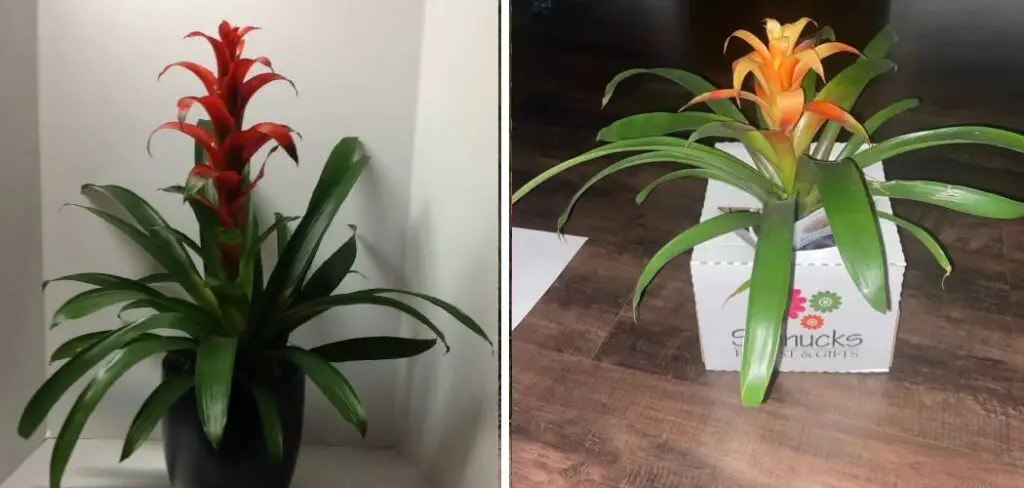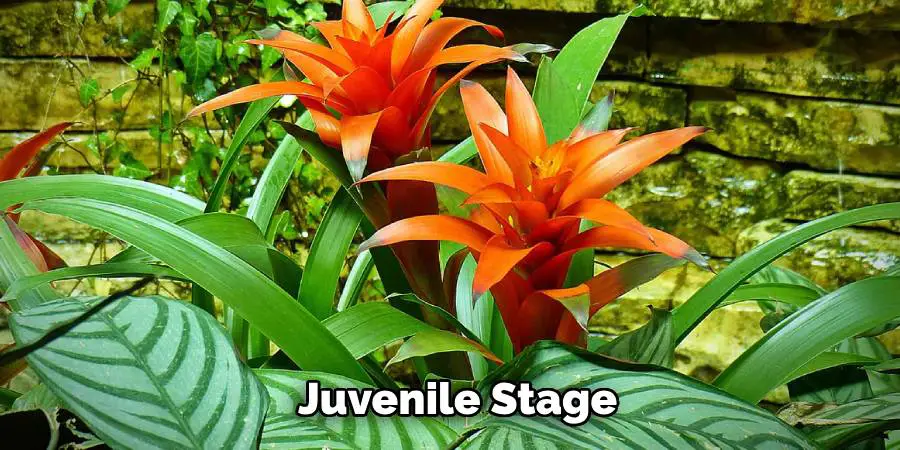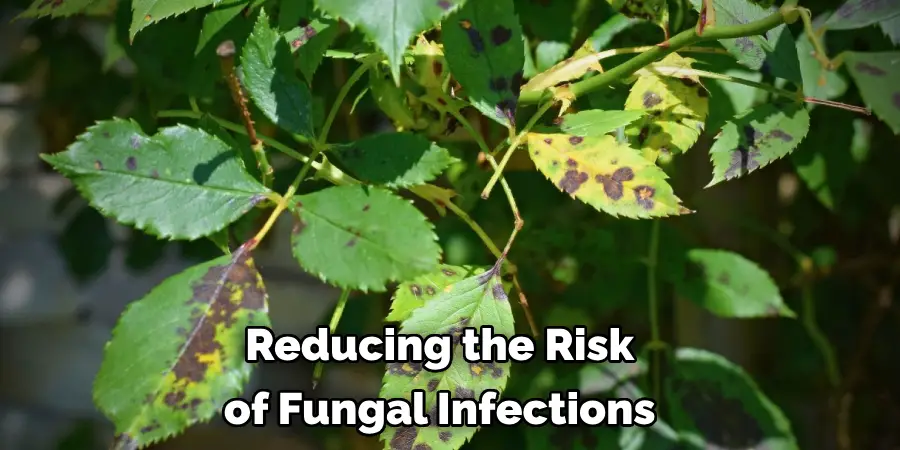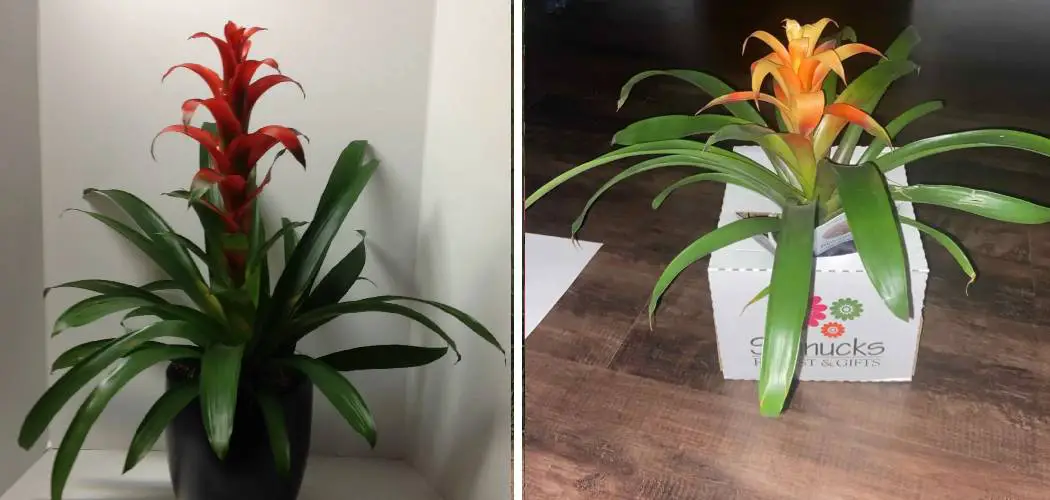Bromeliad flowers play a crucial role in adding vibrant colours and tropical flair to both indoor and outdoor spaces. These exotic plants are praised for their striking inflorescences and a wide array of hues, making them a popular choice among gardeners and indoor plant enthusiasts.
Understanding how to make bromeliads flower necessitates a closer look at the various factors that influence their blooming process. Key elements such as light exposure, watering routines, humidity levels, and nutrient supply all significantly impact the plant’s ability to flower. By carefully managing these conditions, one can foster an environment conducive to blooming.

This guide aims to provide a comprehensive overview of the steps required to encourage bromeliad flowering, from establishing optimal lighting conditions to employing flowering stimulants and troubleshooting common issues. With patience and regular care, you can successfully achieve and maintain the beautiful blooms of bromeliads in your home or garden.
Understanding the Bromeliad Flowering Cycle
Natural Blooming Period
The natural blooming period of bromeliads varies depending on the species. Most bromeliads take several years to mature and only bloom once in their lifetime, a process that can last from two to five years. For instance, the popular Aechmea and Guzmania species typically bloom in the summer months, while the Tillandsia species may flower at almost any time of the year, given the right conditions.
The key factors influencing the natural blooming cycle include light and temperature. Bromeliads require bright, indirect light and temperatures ranging between 60-80°F to stimulate the flowering process. Properly managing these environmental conditions can help align their blooming period with their natural cycle.
Bromeliad Lifecycle
The bromeliad lifecycle begins with the growth of a pup, a small offshoot from the parent plant. As the pup matures, it gradually develops into a full-grown plant over a span of one to three years. The growth stages consist of the pup stage, juvenile stage, and finally, the mature stage. Once the bromeliad reaches maturity, it is ready to bloom, typically producing a stunning inflorescence.

Following the flowering stage, the mature plant will eventually die, but not before producing new pups at its base, which continue the life cycle. Understanding where your bromeliad is in its growth stages helps in predicting and encouraging its flowering.
How to Make Bromeliads Flower: Providing Optimal Light Conditions
Light Requirements
Providing the right lighting conditions is crucial for the healthy growth and flowering of bromeliads. These plants thrive in bright, indirect light, which closely mimics their natural habitat—often under the canopy of trees in tropical and subtropical forests. Adequate light is needed to facilitate photosynthesis, an essential process for the plant’s energy production and bloom formation.
However, the specific light needs can vary among different bromeliad species. For instance, species like Aechmea and Neoregelia typically prefer higher light levels and can be placed in sunnier spots, whereas Guzmania and Vriesea species may perform better in shadier environments. Adjusting the light exposure based on the specific requirements of your bromeliad species will ensure optimal growth and flowering. It is advisable to observe the plant for signs of too much or too little light, such as bleached leaves or stunted growth, and adjust the light levels accordingly.
Avoiding Direct Sunlight
While bromeliads need bright light, they should be shielded from direct sunlight to prevent sunburn, which can cause leaf scorching and damage. Direct sunlight can be too intense, especially during midday, leading to unsightly brown or bleached patches on the leaves. To avoid this, place your bromeliad in an area where it can receive filtered light.
Utilizing sheer curtains is an effective way to diffuse harsh sunlight, providing a gentler light that benefits the plant without causing harm. Alternatively, positioning the plant in areas with dappled light or placing it behind larger foliage can help create the ideal light conditions for healthy growth and vibrant blooms.

How to Make Bromeliads Flower: Watering and Humidity Management
Watering Routine
Establishing a balanced watering schedule is essential for the health and flowering of bromeliads. These plants are unique in that they can absorb water through their leaves, making it crucial to keep their central cups filled with water. Start by watering the central cups of the bromeliads, ensuring that there is always a small amount of water present without letting it stagnate. Additionally, for species planted in soil, it is important to keep the soil moist but not overly wet.
An effective routine involves checking the soil and cup moisture levels regularly, usually every 1-2 weeks, to adjust watering frequency as needed based on the plant’s environment and growth stage. To avoid water stagnation, refresh the water in the central cup weekly and ensure proper drainage in the soil to prevent root rot. Observing any unpleasant odor or discoloration can indicate water stagnation or rot, prompting immediate correction.

Humidity Levels
Bromeliads thrive in humid environments, typically requiring around 50-60% relative humidity to flourish. For indoor plants, maintaining these humidity levels can be achieved using various methods. One effective approach is to employ a humidifier to consistently boost the air moisture around the bromeliads. Alternatively, placing the plants on pebble trays filled with water ensures localized humidity as the water evaporates. Make sure the base of the pots does not come into direct contact with the water to prevent root rot. Regularly misting the leaves can also help in maintaining sufficient humidity levels, promoting overall healthier and vibrant growth.
Fertilization and Nutrient Requirements
Choosing the Right Fertilizer
Selecting the appropriate fertilizer is crucial for the healthy growth and vibrant flowering of bromeliads. It is essential to choose a bromeliad-specific fertilizer that is low in nitrogen and high in phosphorus to avoid excessive leaf growth at the expense of flowers.
A balanced approach is essential; a water-soluble fertilizer diluted to quarter strength is typically recommended.
Applying this diluted solution once a month during the growing season ensures that the plant receives sufficient nutrients without the risk of nutrient burn. Always apply the fertilizer to the soil or the central cup, depending on your bromeliad’s watering method, ensuring even distribution for optimal nutrient absorption.
Nutrient Enriched Media
The importance of well-draining potting media cannot be overstated when growing bromeliads. Proper drainage helps avoid waterlogged conditions that can lead to root rot and nutrient deficiency. Integrating organic matter, such as orchid bark, peat moss, or specialized bromeliad mixes, enhances nutrient availability and media aeration.
These components provide a balance of moisture retention and free drainage, creating an optimal environment for bromeliad roots to access necessary nutrients. Regularly assessing and refreshing the potting media, especially after flowering, ensures ongoing support for new pups and maintains the overall health of the bromeliad throughout its lifecycle.
Temperature and Environmental Conditions
Temperature Range
Ideal temperatures for bromeliad growth and flowering range between 60-80°F (15-27°C). Maintaining this temperature range is essential for the plant’s metabolic processes and overall vitality. Bromeliads are sensitive to extreme temperature fluctuations, which can cause stress and inhibit growth.
During colder months, it is vital to protect bromeliads from drafts and ensure they are kept away from windows or areas prone to cold air. Similarly, in extremely hot conditions, placing the plants in a well-ventilated area with indirect sunlight prevents overheating. By keeping the temperature within this optimal range, you can encourage healthy growth and vibrant flowering.
Air Circulation
Promoting adequate airflow around bromeliads is crucial in preventing fungal diseases and promoting overall plant health. Good air circulation helps to dry out excess moisture that can accumulate on the leaves and in the central cups, reducing the risk of fungal infections and rot.

For indoor bromeliad care, utilizing fans or ensuring natural ventilation helps maintain a fresh flow of air around the plants. Positioning bromeliads in spaces where air can freely move around them will create a healthier environment, supporting robust growth and reducing the likelihood of disease. Regularly monitoring ventilation conditions ensures that your bromeliads remain in top condition.
Flowering Stimulants and Techniques
Ethylene Gas Exposure
Utilizing ethylene gas exposure is an effective method to stimulate flowering in bromeliads. This natural plant hormone can be produced by placing ripening fruits, such as apples or bananas, near the plants. As the fruits release ethylene gas, it can trigger the bromeliad’s flowering process. To apply this technique, enclose the bromeliad and the ripening fruit together in a transparent plastic bag or a similar container for approximately one week.
Ensure the enclosure is placed in indirect light and avoid exposing it to direct sunlight, which may cause overheating. Regularly check the fruit to ensure it remains fresh and continues to emit ethylene gas. After the exposure period, remove the fruit and bag, and return the plant to its normal care routine. Controlled exposure is vital, as prolonged exposure to excessive ethylene can potentially harm the plant. Monitoring the plant’s response to treatment can help adjust the duration and frequency of exposure, ensuring optimal results without risking damage.
Cool Temperature Treatment
Mimicking winter conditions through cool temperature treatment is another effective technique to induce blooming in bromeliads. This method involves placing the plant in a cooler environment, typically with temperatures around 55-60°F (13-16°C) for a prolonged period, usually several weeks. During this treatment, maintain consistent watering and humidity levels to keep the plant healthy. Monitor the bromeliad closely for any signs of stress or adverse reactions, such as leaf discoloration or wilting.

If any negative symptoms arise, return the plant to a more suitable temperature range and adjust the cooling duration or intensity accordingly. This technique capitalizes on the natural cycle of many bromeliads, which typically flower after experiencing cooler temperatures. By carefully regulating the plant’s environment and observing its responses, you can effectively induce blooming while ensuring the bromeliad remains healthy and vibrant.
Troubleshooting Common Flowering Issues
Identifying Potential Problems
Bromeliads may fail to flower due to a range of issues such as improper lighting, incorrect watering practices, or nutrient deficiencies. Common signs of stress or nutrient imbalances include yellowing leaves, stunted growth, or a lack of new pups. Ensuring bromeliads receive adequate but not excessive light, maintaining consistent moisture without waterlogging, and providing balanced nutrients can mitigate these issues and encourage flowering.
Corrective Actions
Adjusting care routines based on plant responses involves fine-tuning light exposure, amending fertilization practices, and ensuring proper humidity levels. If the plant is not flowering, try relocating it to a spot with indirect sunlight or supplementing with artificial grow lights. Address nutrient deficiencies by revising fertilization schedules or using a specialized bromeliad fertilizer. For persistent issues, consulting with experts or local gardening resources can provide specific guidance tailored to your bromeliad’s unique needs.
Conclusion
Understanding how to make bromeliads flower involves mastering key strategies that promote healthy growth and vibrant blooms. Ensuring optimal temperature ranges, promoting adequate air circulation, and leveraging flowering stimulants such as ethylene gas exposure and cool temperature treatments are crucial techniques. Regularly assessing environmental conditions and responding to any signs of stress with targeted corrective actions can dramatically improve the chances of successful flowering.
As you apply these practices, remember that patience and consistency are essential. Bromeliads may take time to respond, but with persistent care and attention, your efforts will be rewarded with beautiful blooms. By following the outlined methods, you can create an ideal environment for your bromeliads to thrive and flower, transforming your space with their unique and exotic beauty.
About
Outdoor Fixes is a distinguished figure in the world of Diy design, with a decade of expertise creating innovative and sustainable Diy solutions.
His professional focus lies in merging traditional craftsmanship with modern manufacturing techniques,
fostering designs that are both practical and environmentally conscious. As the author of diy,
outdoorfixes delves into the art and science of outdoorfixes-making, inspiring artisans and industry professionals alike.
Education RMIT University
(Melbourne, Australia) Associate Degree in Design (Outdoor Fixes) Focus on sustainable design, industry-driven projects,
and practical craftsmanship. Gained hands-on experience with traditional and digital manufacturing tools, such as CAD and CNC software.
Nottingham Trent University
(United Kingdom) Bachelor’s in outdoorfixes.com and Product Design (Honors) Specialized in product design with a focus on blending creativity with production
techniques. Participated in industry projects, working with companies like John Lewis and Vitsoe to gain real-world insights.
Publications and Impact
In diy, Outdoor Fixes his insights on indoor design processes, materials, and strategies for efficient production.
His writing bridges the gap between artisan knowledge and modern industry needs, making it a must-read for both budding designers and seasoned professionals.

